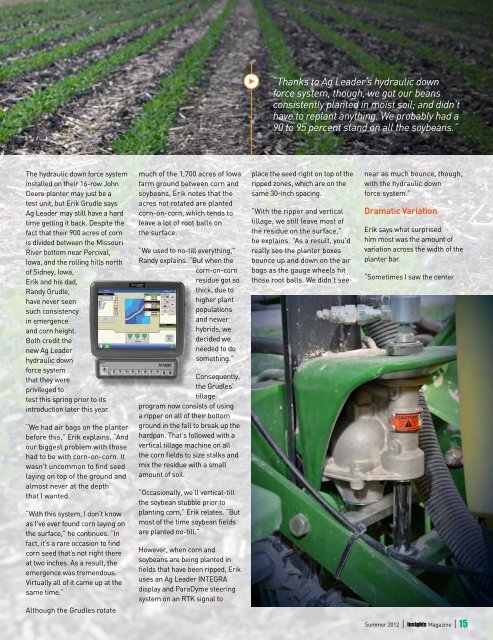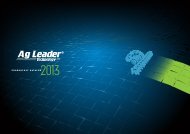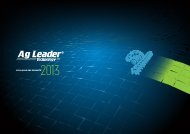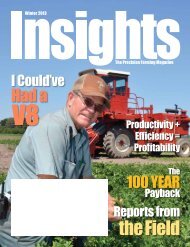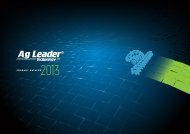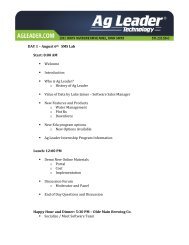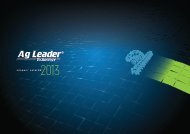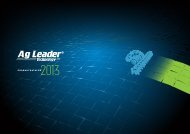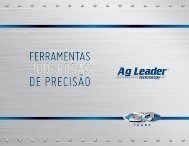Create successful ePaper yourself
Turn your PDF publications into a flip-book with our unique Google optimized e-Paper software.
“Thanks to <strong>Ag</strong> <strong>Leader</strong>’s hydraulic downforce system, though, we got our beansconsistently planted in moist soil; and didn’thave to replant anything. We probably had a90 to 95 percent stand on all the soybeans.”The hydraulic down force systeminstalled on their 16-row JohnDeere planter may just be atest unit, but Erik Grudle says<strong>Ag</strong> <strong>Leader</strong> may still have a hardtime getting it back. Despite thefact that their 900 acres of cornis divided between the MissouriRiver bottom near Percival,Iowa, and the rolling hills northof Sidney, Iowa,Erik and his dad,Randy Grudle,have never seensuch consistencyin emergenceand corn height.Both credit thenew <strong>Ag</strong> <strong>Leader</strong>hydraulic downforce systemthat they wereprivileged totest this spring prior to itsintroduction later this year.“We had air bags on the planterbefore this,” Erik explains. “Andour biggest problem with thosehad to be with corn-on-corn. Itwasn’t uncommon to find seedlaying on top of the ground andalmost never at the depththat I wanted.“With this system, I don’t knowas I’ve ever found corn laying onthe surface,” he continues. “Infact, it’s a rare occasion to findcorn seed that’s not right thereat two inches. As a result, theemergence was tremendous.Virtually all of it came up at thesame time.”Although the Grudles rotatemuch of the 1,700 acres of Iowafarm ground between corn andsoybeans, Erik notes that theacres not rotated are plantedcorn-on-corn, which tends toleave a lot of root balls onthe surface.“We used to no-till everything,”Randy explains. “But when thecorn-on-cornresidue got sothick, due tohigher plantpopulationsand newerhybrids, wedecided weneeded to dosomething.”Consequently,the Grudles’tillageprogram now consists of usinga ripper on all of their bottomground in the fall to break up thehardpan. That’s followed with avertical tillage machine on allthe corn fields to size stalks andmix the residue with a smallamount of soil.“Occasionally, we’ll vertical-tillthe soybean stubble prior toplanting corn,” Erik relates. “Butmost of the time soybean fieldsare planted no-till.”However, when corn andsoybeans are being planted infields that have been ripped, Erikuses an <strong>Ag</strong> <strong>Leader</strong> INTEGRAdisplay and ParaDyme steeringsystem on an RTK signal toplace the seed right on top of theripped zones, which are on thesame 30-inch spacing.“With the ripper and verticaltillage, we still leave most ofthe residue on the surface,”he explains. “As a result, you’dreally see the planter boxesbounce up and down on the airbags as the gauge wheels hitthose root balls. We didn’t seenear as much bounce, though,with the hydraulic downforce system.”Dramatic VariationErik says what surprisedhim most was the amount ofvariation across the width of theplanter bar.“Sometimes I saw the centerSummer 2012 | Insights Magazine | 15


